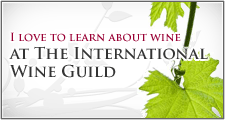In the USA, there are the Rockefellers, the Kennedy’s, the Carnegies and, of course, the Jordans. In France, there are the Rothschilds. A family who was originally known for banking, they eventually put their money where their grapes were and became producers of some of France’s finest wines. In many ways, they remain one of the French’s most influential families: if the nursery rhyme talked of an investor, a banker, and a cabernet maker, the three men in the tub would have undoubtedly been Rothschilds.
Unfortunately, they lost one of their own on August 6, 2007. Baron Elie de Rothschild succumbed to a heart attack at the age of 90 while on a hunting trip. A banker (natch), Elie also oversaw the Chateau Lafite-Rothschild vineyard from 1946 to 1974. For his vino and his vines, he is remembered as a wine icon.
Born on May 29, 1917, Elie served in World War II as an Allied solider. During this time, he, as well as his brother, were taken prisoner by the Germans and placed in POW camps. Though Elie was said to have been imprisoned in one of the particularly heinous POW camps - not that any of them were five star - his spirits, and his passions, were not compromised.
Following the war, as many nations fought to rebuild themselves, Elie fought to rebuild his family’s vineyard; people often ask what war is good for, and the answer is definitely not grapes. With the Chateau practically in shambles, Elie took control.
As the driving force behind Chateau Lafite-Rothschild, Ellie worked with practical motives to restore the winery to greatness. Unbeknownst at the time, he would ultimately leave a mark more permanent than a red wine stain.
Elie is credited with producing two of Chateau Lafite-Rothschild’s most impressive and beloved Bordeaux vintages: one in 1947 and another two years later. He also became a well-known taster in the London area, one who was highly respected by winemakers. In 1950, Elie helped found the Bordeaux Wine Guild.
Presently, Chateau Lafite-Rothschild is one of the largest in the Medoc region of France. It produces approximately 45,000 cases annually, with as many as 25,000 of these cases from the first growth, and includes the grapes of Cabernet Sauvignon, Merlot, Cabernet, and Petit Verdo.
Purchased on August 8, 1868 by Baron James Mayer Rothschild, the Chateau has been in the family for nearly one hundred and forty years and Elie made sure it would stay that way. After nearly thirty years as the leader of the vineyard, Elie handed down the reigns of Chateau Lafite-Rothschild in 1974 to his nephew, Eric de Rothschild.
With Elie’s passing, the world of wine has lost one of its greatest allies. But, at least we know that the Bordeaux in Heaven has just gotten a little bit better. We also know that Baron Elie de Rothschild’s legacy will live on, as if safely corked in a bottle.






